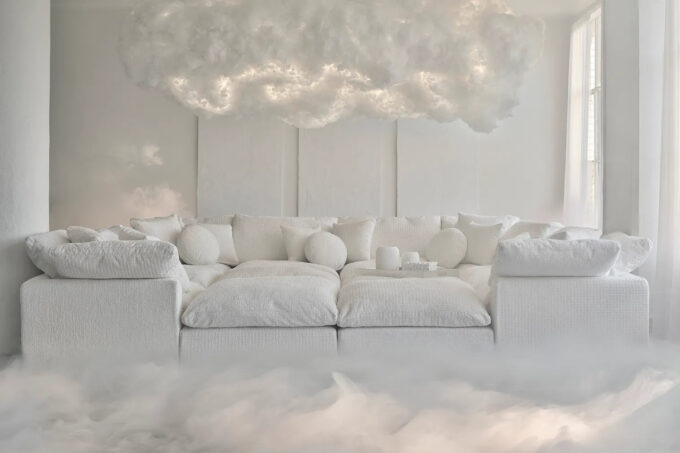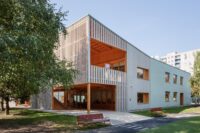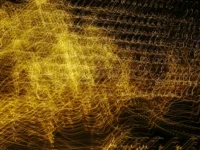- Home
- Articles
- Architectural Portfolio
- Architectral Presentation
- Inspirational Stories
- Architecture News
- Visualization
- BIM Industry
- Facade Design
- Parametric Design
- Career
- Landscape Architecture
- Construction
- Artificial Intelligence
- Sketching
- Design Softwares
- Diagrams
- Writing
- Architectural Tips
- Sustainability
- Courses
- Concept
- Technology
- History & Heritage
- Future of Architecture
- Guides & How-To
- Art & Culture
- Projects
- Interior Design
- Competitions
- Jobs
- Store
- Tools
- More
- Home
- Articles
- Architectural Portfolio
- Architectral Presentation
- Inspirational Stories
- Architecture News
- Visualization
- BIM Industry
- Facade Design
- Parametric Design
- Career
- Landscape Architecture
- Construction
- Artificial Intelligence
- Sketching
- Design Softwares
- Diagrams
- Writing
- Architectural Tips
- Sustainability
- Courses
- Concept
- Technology
- History & Heritage
- Future of Architecture
- Guides & How-To
- Art & Culture
- Projects
- Interior Design
- Competitions
- Jobs
- Store
- Tools
- More
How to Use Lighting to Highlight Architectural Features and Create Visual Interest

Creating a captivating architectural space requires more than just striking designs; lighting plays a crucial role in enhancing the overall aesthetic. Properly utilized lighting can emphasize unique architectural features, direct attention where needed, and evoke specific moods. Whether in a residential or commercial setting, the right illumination can make spaces feel larger, warmer, or more inviting. The interplay of light and structure not only highlights specific aspects but also adds depth and dimension to the overall design. This importance makes understanding how to utilize various lighting techniques essential for any interior designer or homeowner.
Table of Contents
ToggleUnderstanding Architectural Features and Their Importance
Architectural features, such as arches, columns, and moldings, contribute significantly to a building’s character. These elements define the style and influence how people perceive a space. Highlighting such features with lighting can transform a bland area into something memorable. The right lighting can give architectural details a certain glow that draws the eye while providing context about the space’s overall aesthetic, history, or purpose. Knowing which features to accentuate and how to go about it will help enhance the atmosphere within a room, whether through natural light or fixtures. Natural light can be channeled through strategically placed windows, while artificial lighting can be designed to spotlight specific details.

Choosing the Right Type of Lighting
Not all lighting is created equal, and understanding the types can significantly influence the effect on architectural features. Ambient lighting serves as the general illumination of a space, providing an even light level that allows people to navigate comfortably. However, to make specific architectural elements stand out, accent and task lighting are essential. Accent lighting focuses directly on particular features, creating contrast that brings them to life. This can include wall sconces that highlight intricate details or spotlights that draw the viewer’s attention to art pieces or architectural niches. Task lighting is not just functional; it can also serve as a design element, casting a warm glow as it illuminates workspaces that coincide with eye-catching chandelier styles chosen for the area. These different types of lighting should complement each other, ensuring that no feature is left in shadow while guiding viewers through the space seamlessly.
Layered Lighting Techniques
Layering light is a method that combines different types of lighting for depth and variety. This technique not only highlights major architectural features but also adds dimension to various areas of the room. By creating layers, designers can control brightness and atmosphere, shifting the scene from morning light to the cozy ambiance of evening glow. Begin with ambient lighting as your base, then add task lighting where activity occurs, followed by accent lighting to highlight specific features like a unique ceiling design or an elaborate staircase. The balance created by the layers encourages viewers’ eyes to travel through the space instead of lingering on one area.
Using Colors and Temperature in Lighting
The color and temperature of lighting affect not only how a space feels but how architectural details are perceived. Warmer tones typically create cozy, intimate atmospheres, while cooler tones can produce a more contemporary or clinical vibe. Use warm light to enhance natural materials like wood and stone, highlighting their textures and warmth. On the other hand, cooler lighting can be effective in modern spaces filled with glass or metal, creating a sleek, polished finish. Furthermore, colored LED lights can introduce creative flair, allowing for dynamic changes in mood and ambiance. It’s essential to consider how the color temperature interacts with different surfaces and textures, as some colors reflect light differently, affecting the overall atmosphere.
Incorporating Natural Light into Design
Natural light immensely influences how architectural features are experienced, enhancing them with its dynamic and ever-changing qualities. Proper orientation of windows and skylights allows for sunlight to flood in and highlight key areas throughout the day. Consider the positioning of different architectural details and how they will be illuminated across hours; dramatic shadows can enhance shapes and textures. Furthermore, materials such as glass can create stunning reflections, changing the way space is perceived. To maximize the beauty of natural light, use light fabrics and bright colors for decor, which can reflect light effectively. It’s also important to ensure natural light sources are unobstructed to maximize their potential.

Focal Points and Contrast
Establishing focal points within a space guides where the eye should land first, and effective lighting can direct this attention. Use contrast to draw interest: juxtaposing bright light with shadow stimulates visual excitement. Dramatic lighting on a unique architectural element can create an air of importance, drawing viewers in and encouraging exploration. This technique can also transform flat surfaces into vibrant landscapes through strategic spotlights. Additionally, surrounding darker areas or textures can maintain attention on the illuminated features, deepening the impact. It’s also vital to consider the height and positioning of light sources, as lower fixtures can create more intimate settings, and higher placements can enhance spaciousness.
By understanding the role of different types of lighting, layering techniques, and the effects of color and natural light, you can curate an environment that highlights what makes the design special. Whether it’s choosing the perfect fixtures or maintaining adaptability in your lighting solutions, each decision can transform a space from ordinary to extraordinary. Overall, thoughtful integration of lighting will ensure that your architectural elements shine, making your design truly unforgettable.
illustrarch is your daily dose of architecture. Leading community designed for all lovers of illustration and #drawing.
Submit your architectural projects
Follow these steps for submission your project. Submission FormLatest Posts
10 Interesting Facts About Zaha Hadid
Zaha Hadid was a visionary architect whose fluid forms, bold experimentation, and...
Online 3D Terrain Mapping Tools for Urban and Landscape Design in 2025
A curated guide to the best online 3D terrain mapping tools in...
Common Emergency Repairs Every Homeowner Should Be Ready For
For most of us, when something goes wrong, we have a propensity...
Designing, Retrofitting, and Valuing Non-Standard Homes in Britain
Britain’s housing stock carries a quiet contradiction. From the street, many homes...












Leave a comment